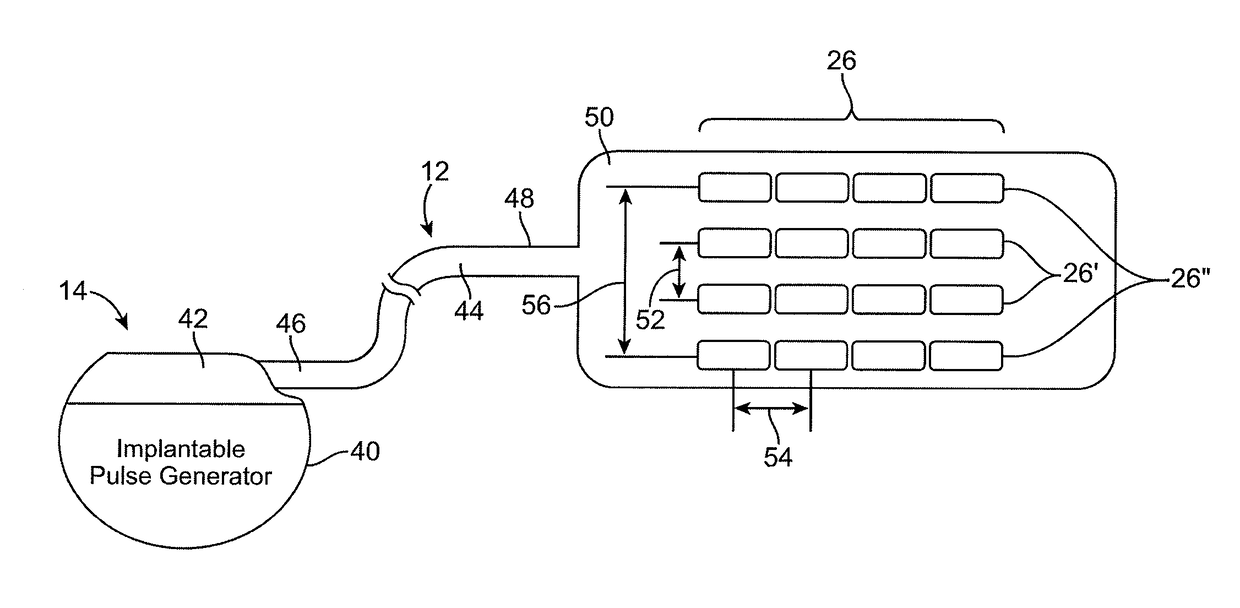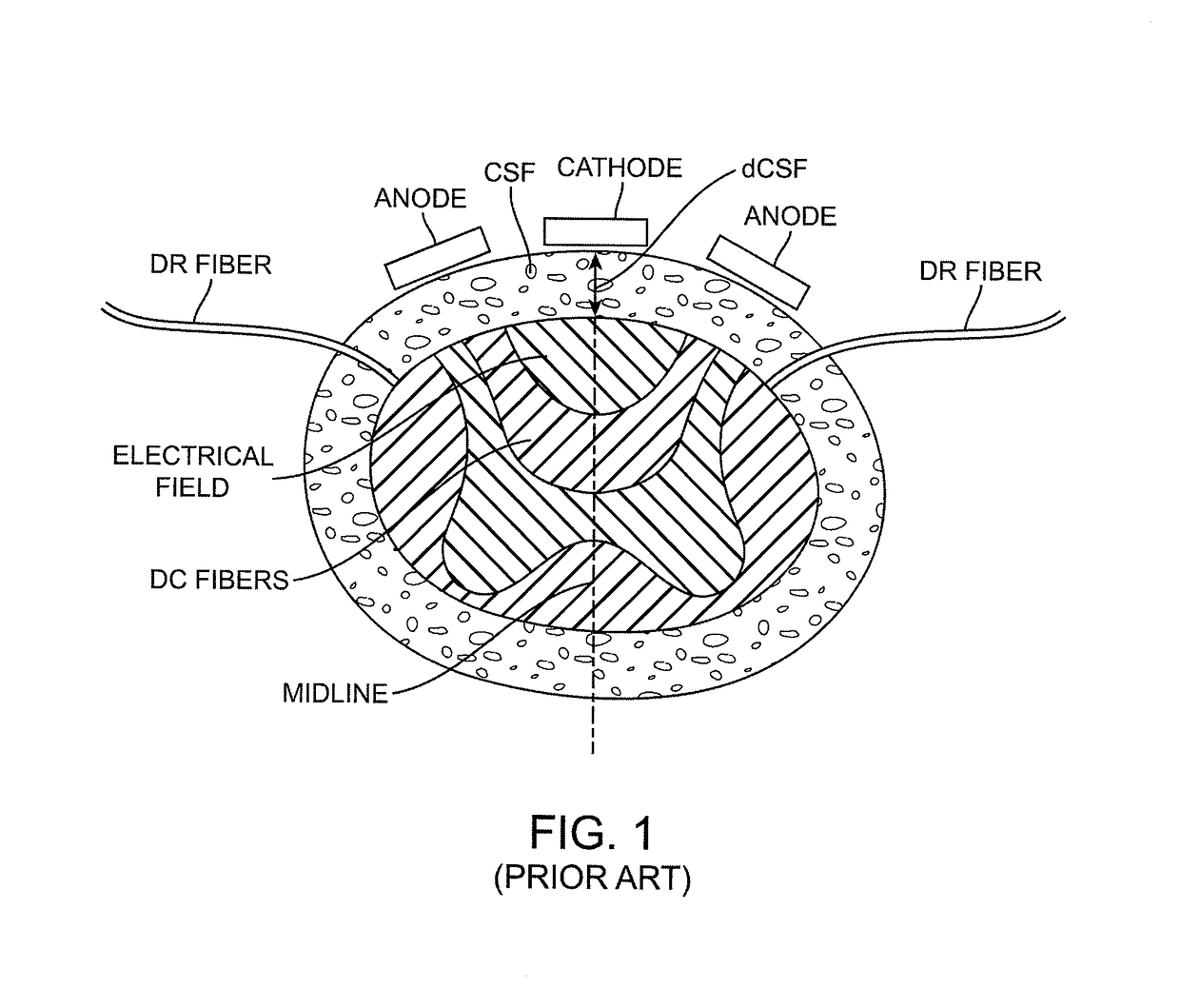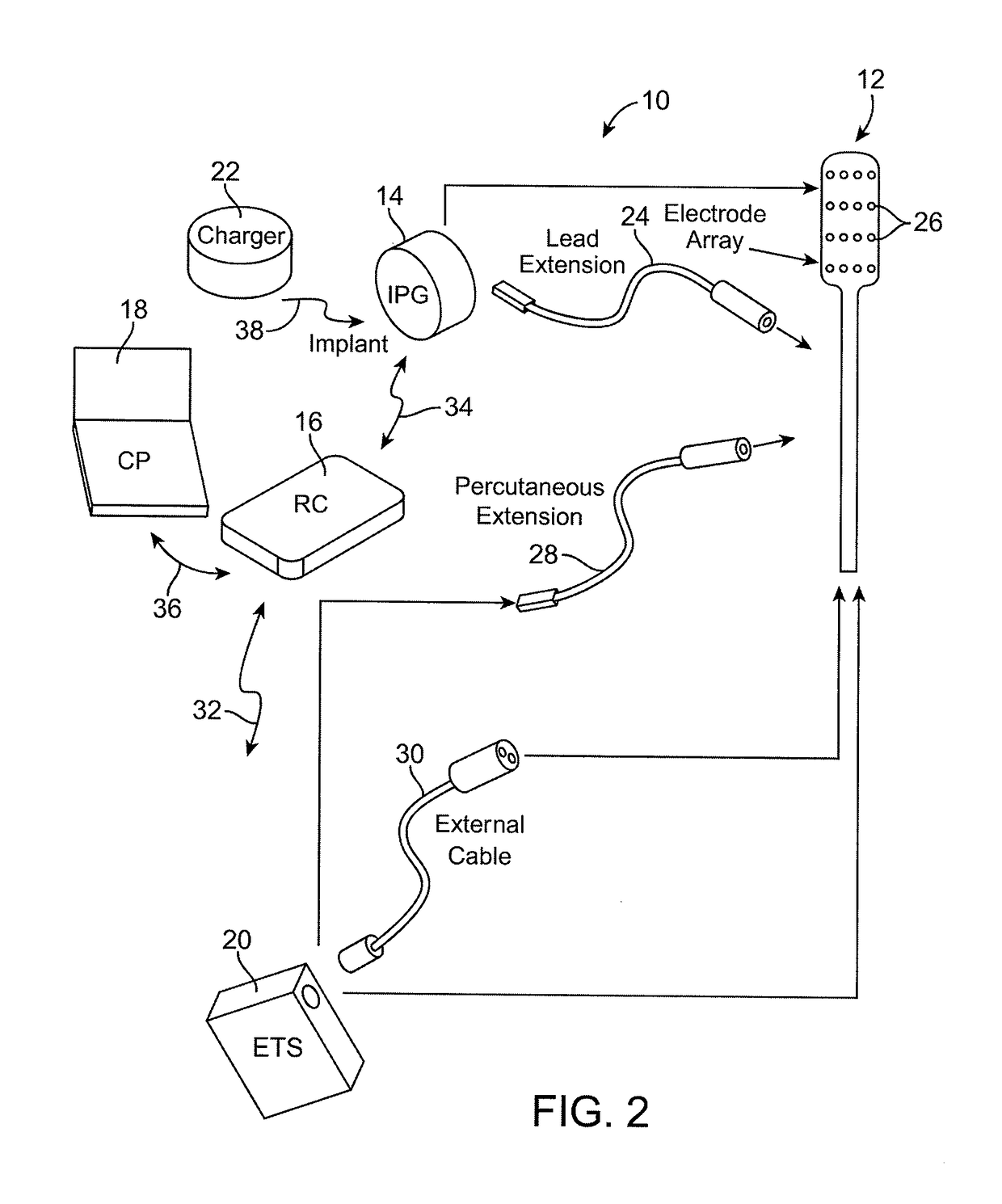Multiple tunable central cathodes on a paddle for increased medial-lateral and rostral-caudal flexibility via current steering
a technology of tunable central cathodes and current steering, which is applied in the field of tissue stimulation systems, can solve the problems of difficult to target all pain areas, difficult to achieve effective and ineffective pain therapy, and difficult to target areas (e.g., the lower back) particularly difficult to achiev
- Summary
- Abstract
- Description
- Claims
- Application Information
AI Technical Summary
Benefits of technology
Problems solved by technology
Method used
Image
Examples
Embodiment Construction
[0063]Turning first to FIG. 2, an exemplary spinal cord stimulation (SCS) system 10 generally comprises an implantable stimulation lead 12, an implantable pulse generator (IPG) 14 (or alternatively RF receiver-stimulator), an external remote control RC 16, a Clinician's Programmer (CP) 18, an External Trial Stimulator (ETS) 20, and an external charger 22.
[0064]The IPG 14 is physically connected via a lead extension 24 to the stimulation lead 12, which carries a plurality of electrodes 26 arranged in an array. As will be described in further detail below, the IPG 14 includes pulse generation circuitry that delivers electrical stimulation energy in the form of a pulsed electrical waveform (i.e., a temporal series of electrical pulses) to the electrode array 26 in accordance with a set of stimulation parameters.
[0065]The ETS 20, which has similar pulse generation circuitry as the IPG 14, also provides electrical stimulation energy to the electrode array 26 in accordance with a set of s...
PUM
 Login to View More
Login to View More Abstract
Description
Claims
Application Information
 Login to View More
Login to View More - R&D
- Intellectual Property
- Life Sciences
- Materials
- Tech Scout
- Unparalleled Data Quality
- Higher Quality Content
- 60% Fewer Hallucinations
Browse by: Latest US Patents, China's latest patents, Technical Efficacy Thesaurus, Application Domain, Technology Topic, Popular Technical Reports.
© 2025 PatSnap. All rights reserved.Legal|Privacy policy|Modern Slavery Act Transparency Statement|Sitemap|About US| Contact US: help@patsnap.com



